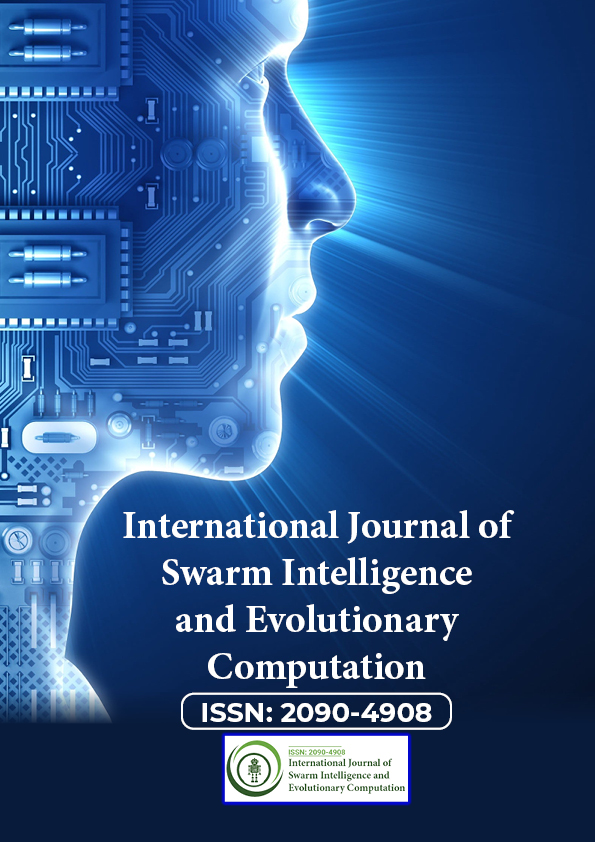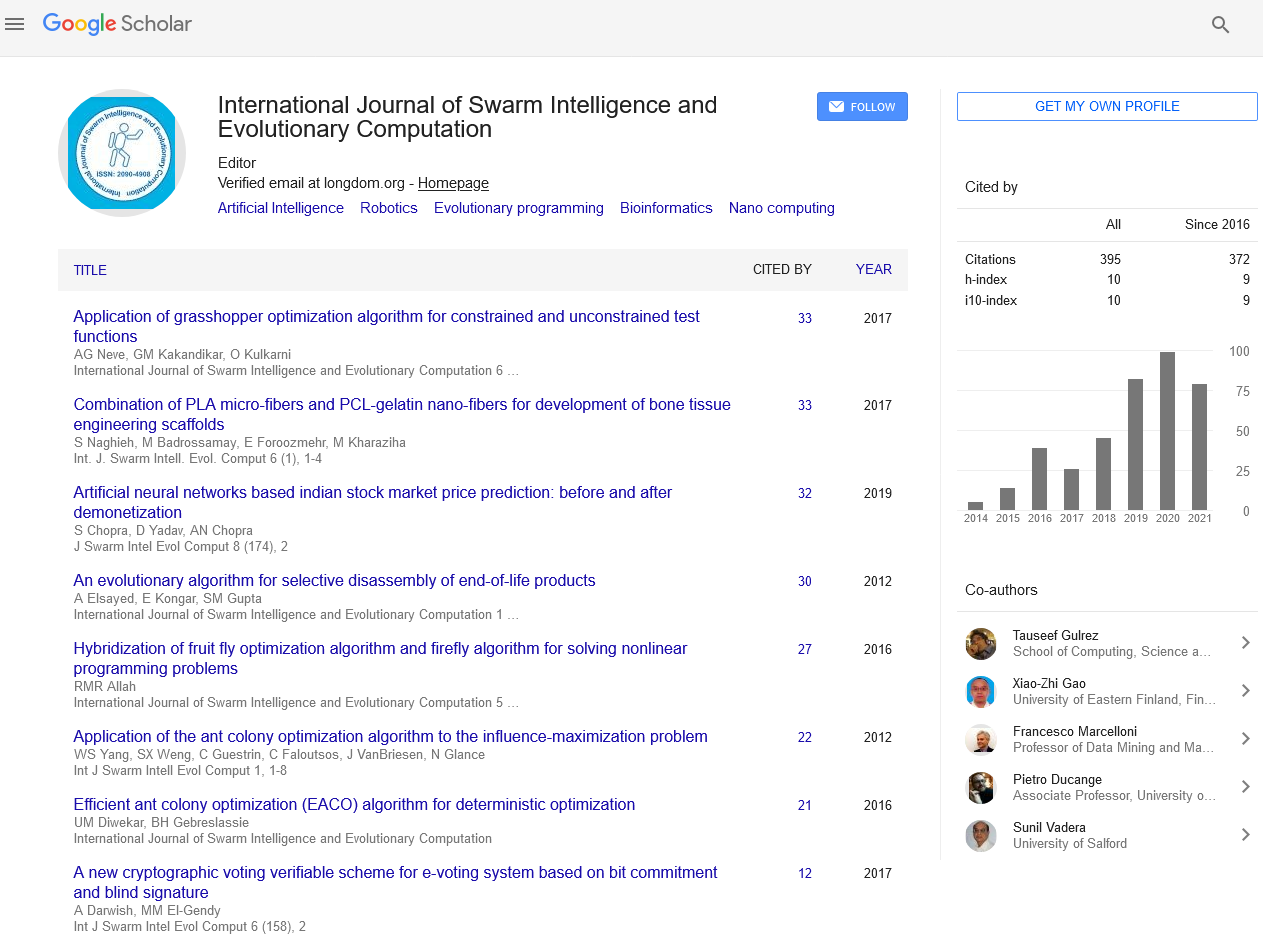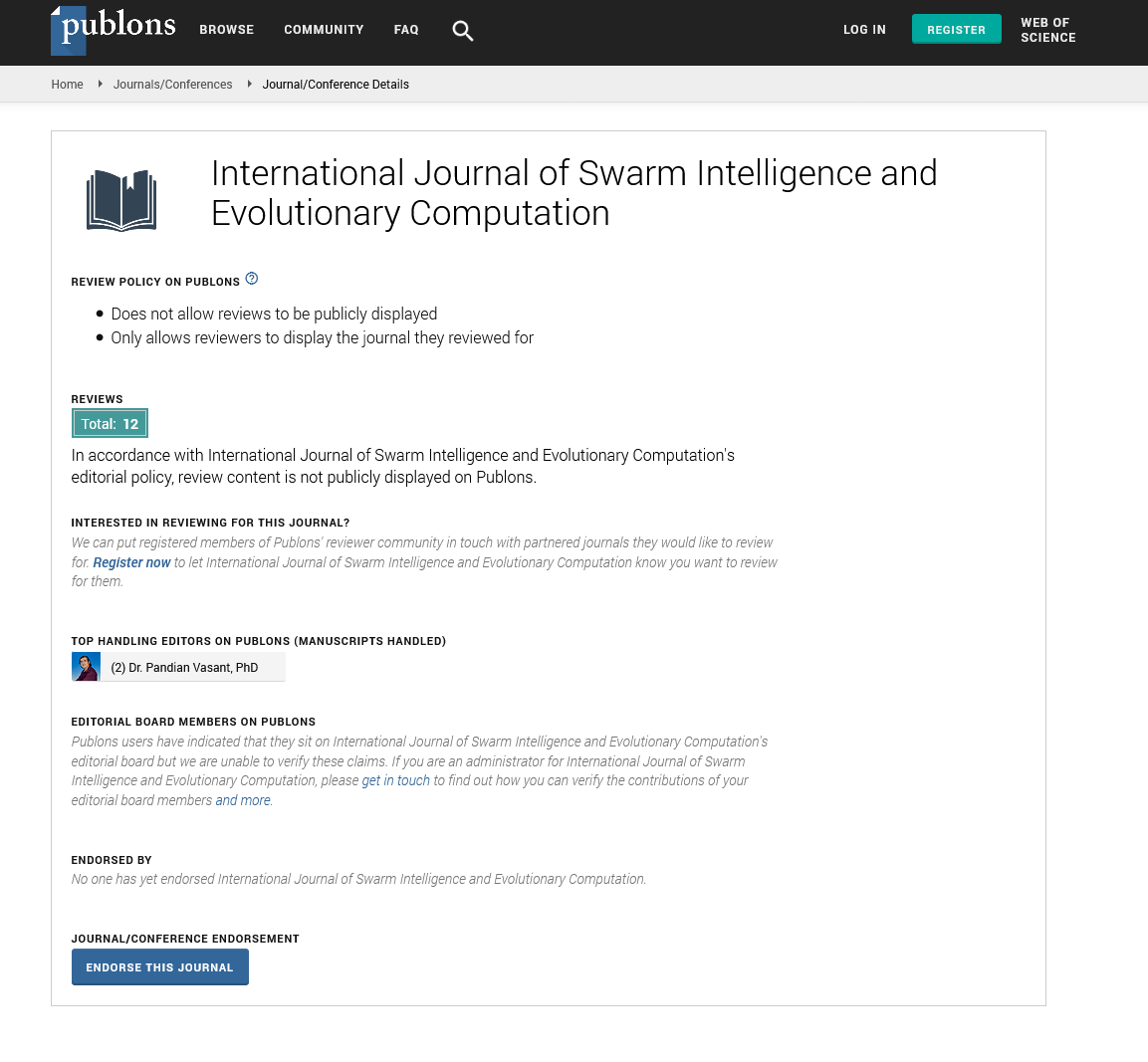Indexed In
- Genamics JournalSeek
- RefSeek
- Hamdard University
- EBSCO A-Z
- OCLC- WorldCat
- Publons
- Euro Pub
- Google Scholar
Useful Links
Share This Page
Journal Flyer

Open Access Journals
- Agri and Aquaculture
- Biochemistry
- Bioinformatics & Systems Biology
- Business & Management
- Chemistry
- Clinical Sciences
- Engineering
- Food & Nutrition
- General Science
- Genetics & Molecular Biology
- Immunology & Microbiology
- Medical Sciences
- Neuroscience & Psychology
- Nursing & Health Care
- Pharmaceutical Sciences
Commentary - (2022) Volume 11, Issue 8
Mobile Robotic Systems and its Applications
Elnaj Rostami*Received: 18-Jul-2022, Manuscript No. SIEC-22-18056; Editor assigned: 21-Jul-2022, Pre QC No. SIEC-22-18056 (PQ); Reviewed: 09-Aug-2022, QC No. SIEC-22-18056; Revised: 18-Aug-2022, Manuscript No. SIEC-22-18056 (R); Published: 30-Aug-2022, DOI: 10.35248/2090-4908.22.11.268
Description
Mobile robots are objects that move around their environment and are not restricted to a single physical area. They include instrument panels such as LASER scanners, monocular cameras, and RFID devices for terrain sensing. They can be controlled via Bluetooth, a wireless computer network, a wireless remote control microcontroller, and so on. They are employed for security, maintenance, industrial transit, military purposes, and so on. Mobile robots are the focus of much current research, and nearly every major university has one or more labs dedicated to mobile robot research. Mobile robots are also used in industry, the military, and security. They also exist as consumer devices, such as vacuum cleaners, for enjoyment or to do specific jobs. One significant benefit of mobile robots is their computer vision skills. Mobile robots can accurately monitor their surroundings in real time thanks to the intricate array of sensors they use to detect their surroundings. This is especially useful in industrial environments where things are continually altering and shifting.
Mobile robots may roam around their environment and are not restricted to a single physical area. Mobile robots can be Autonomous Mobile Robot (AMR), meaning they can navigate an uncontrolled environment without the use of physical or electro-mechanical guidance equipment. Mobile robots, on the other hand, can rely on guiding systems to travel a pre-defined navigation route in somewhat controlled space.
A mobile robot's components include a controller, sensors, actuators, and a power system. In most cases, the controller is a microprocessor, embedded microcontroller, or Personal Computer (PC). The sensors utilised are determined by the robot's needs. Dead reckoning, touch and proximity sensing, triangulation ranging, collision avoidance, position determination, and other particular applications may be required.
Applications
Medical facilities
Mobile robots can do a lot of the heavy lifting. They might assist in surgical procedures, shift patients, gather and deliver supplies, and even sterilize rooms. Robots have the potential to cut the number of time-consuming jobs, reduce workplace strain and injuries, and assure more uniform quality of care.
Robotic automation process
Nursery planting is a popular choice among plant enthusiasts. We can receive veggies and fruits for our daily needs by planting the necessary crops at home. However, grooming and watering them on a regular basis is time consuming. This is where the robotic automation method shines. Robotic process automation handles all nursery planting tasks, such as watering at regular intervals and plucking vegetables or fruits when they are ripe.
Autonomous agricultural robots
The most recent breakthrough in agricultural robotics is the agricultural autonomous robot. These robots can multitask thanks to their different features and cutting-edge technology. They can do it all, from cloud seeding to seed planting, weed control, harvesting, environmental monitoring, and soil analysis. It can handle entire agricultural processes and replace difficult manual tasks with technology.
Sorting and packing robots
Sorting and packing require a large number of human operators in addition to the actual agricultural activity. Human labourers in packing are in high demand in today's fast-paced manufacturing environment. As a result, many farming organizations use sorting and packing robots to do duties at rapid speeds without breaking. These robots can speed up the packaging process thanks to their coordination abilities and line tracking technologies.
Citation: Rostami E (2022) Mobile Robotic Systems and its Applications. Int J Swarm Evol Comput. 11:268.
Copyright: © 2022 Rostami E. This is an open-access article distributed under the terms of the Creative Commons Attribution License, which permits unrestricted use, distribution, and reproduction in any medium, provided the original author and source are credited.


